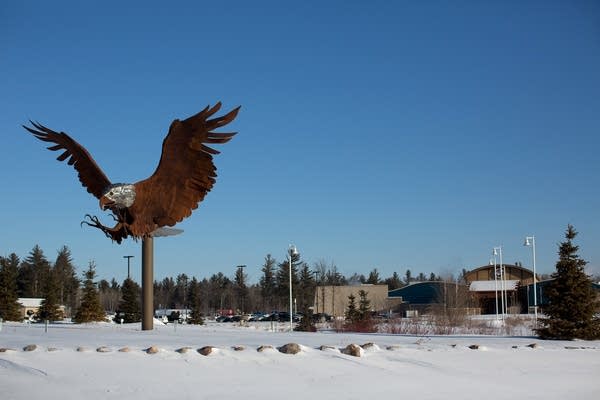Enbridge settles $18.5M dispute with Red Lake

Go Deeper.
Create an account or log in to save stories.
Like this?
Thanks for liking this story! We have added it to a list of your favorite stories.
After a nearly decade-long dispute, Enbridge will pay Red Lake Nation $18.5 million for less than half an acre of land.
Starting in 1950, Lakehead Pipeline, which is now owned by Enbridge, laid four oil pipelines through a small isolated section of Red Lake land. The tribe never gave the company permission, and was never paid for their use of the land.
In a split vote in late December, the Red Lake Tribal Council accepted the Enbridge settlement, which pays for the land and restitution for 65 years of unauthorized use.
"This is really a windfall for the tribe," said Red Lake Executive Administrator Charles Dolson. "It's a total win for us."
Turn Up Your Support
MPR News helps you turn down the noise and build shared understanding. Turn up your support for this public resource and keep trusted journalism accessible to all.
The land, known as Lot 8, is 20 miles south of the main Red Lake reservation, near Leonard, Minn. It was part of 3 million acres originally ceded by the tribe in 1889. The U.S. Government sold off pieces of that land for half a century, and returned the remaining lots to the tribe in 1945.
But Lot 8 was lost in legal paperwork. A nearby landowner thought it was part of his land, and received easements when the pipelines came through.
In 2007, a Bureau of Indian Affairs legal team was working to clarify the borders of tribal land when they realized Red Lake still legally owned Lot 8, meaning four Enbridge pipelines had trespassed on tribal land for decades.
The recent settlement is by far the largest figure ever offered. At first Enbridge offered $350,000. In 2011, Red Lake asked for $10 million, which is roughly the cost of moving the pipelines off the property, but Enbridge turned them down.
The $18.5 million is the best settlement the tribe could have hoped for, Dolson said, adding, "We told Enbridge, 'You have to make this a long term benefit for the tribe. There are going to be people that aren't happy about this deal.'"
Dolson said some tribe members view the deal as a betrayal. Some people wanted Red Lake to leverage the piece of land to bog Enbridge down with lawsuits, and force the company to either move their pipelines or halt the flow of oil entirely.
"We might have been able to make them move the pipelines," he said. "But the oil never would have stopped flowing."
Dolson said taking $18.5 million will save the tribe more years of costly court battles. As part of the deal, Enbridge also agreed to buy Red Lake another piece of land.
Enbridge officials did not return calls for comment.


